Inspection Plus software for machining centres

Inspection Plus
About Inspection Plus
Inspection Plus provides an integrated package of macro software that includes vector and angle measure options, print options (controller dependent) and an extended range of cycles.
Inspection Plus includes an SPC cycle, 1-touch or 2-touch probing options, tool offset compensation by percentage of the measured error, and output of data stored into an accessible variable stack.
Features and benefits
Compared to the more basic Inspection software:
- All cycles in one integrated package
- Improve output data storage and report formatting
- Extra cycles - angle corner find, internal boss / web, vector probing, angled web / pocket measure and stock allowance
- Feature-to-feature distance measurement
- Optional 1- or 2-touch probing - one touch probing on controls with high speed skip, whilst two touch cycles offer greater accuracy where a high speed input is not available
- Protected positioning - stop the machine in the event of an unexpected collision
- Tolerances on size and position, applying an alarm if material is out of tolerance
- Ensure process stability by specifying a band around the nominal size where no error compensation is applied
- 'Damped' corrections (% of error feedback) to avoid overshooting the nominal size
- SPC feedback based on trend analysis and average readings
- Apply correction factors that take account of known process characteristics
- Results can be printed or written to a file
![]()
Inspection Plus cycles
3 point bore / boss cycle
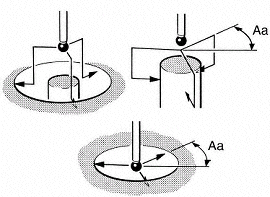 Measure
a bore or boss using three points at any angle
Measure
a bore or boss using three points at any angle
Example
G65 P9823 A0. B120. C-120. D50. S4.
4th axis measure cycle
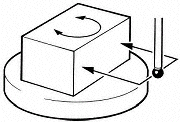 Compensate
for 4th axis alignment
Compensate
for 4th axis alignment
Example
G65 P9817 X100. Z50. S1.
Angled surface cycles
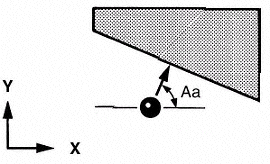 Vector
measurement of angled surface and co-ordinate rotation
Vector
measurement of angled surface and co-ordinate rotation
Vector measurement example
G65 P9821 A60. D30.
Angle measurement example
G65 P9843 Y50. D30. A-30.
Angled web / pocket cycle
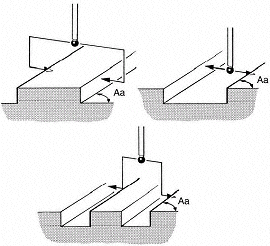 Measure
the width of an angled web / pocket feature
Measure
the width of an angled web / pocket feature
Example
G65 P9822 D50. Z-10. A45.
Bore / boss cycle
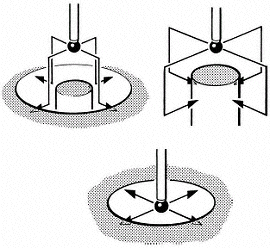 Measure
the size and position of a bore or boss
Measure
the size and position of a bore or boss
Example
G65 P9814 D50. Z-10. S4.
Bore / boss on a P.C.D.
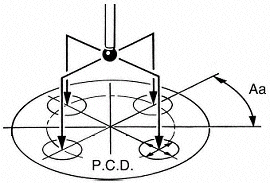 Find
the size and position of a pitch circle diameter through
four holes or bosses
Find
the size and position of a pitch circle diameter through
four holes or bosses
Example
G65 P9819 C200. D25. K-10. B4. A45.
Feature to feature
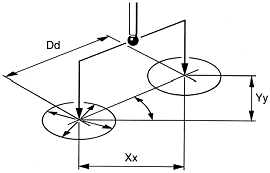 Find
the distance between two measured features
Find
the distance between two measured features
Example
G65 P9810 X0 Y0 F5000.
G65 P9814 D20.
G65 P9834
G65 P9810 X50.
G65 P9814 D20.
G65 P9834 X50.
Internal / external corner cycle
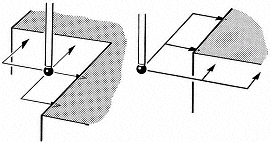 Measure
the position of the corner of a workpiece
Measure
the position of the corner of a workpiece
Internal corner example
G65 P9815 X0. Y0. I20. J20. S6.
External corner example
G65 P9816 X0. Y0. I20. J20. S6.
Stock allowance cycle
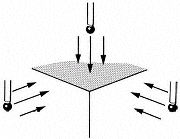 Measure
a surface with multiple points to accommodate material
irregularities
Measure
a surface with multiple points to accommodate material
irregularities
Example
G65 P9820 Z0 I20. J20. I30. J30. I40. J40. S6.
Web / pocket cycle
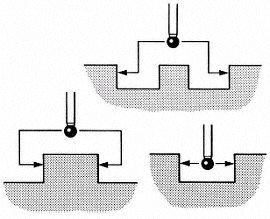 Measure
the width and position of a web or slot
Measure
the width and position of a web or slot
Example
G65 P9812 X50. Z-10. S4.
X / Y / Z surface measure
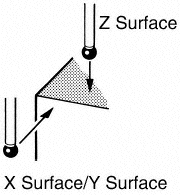 Measure
the position of a plane surface
Measure
the position of a plane surface
Example
G65 P9811 X30. T20.
The accuracy of a probe measurement depends on the speed with which the machine tool control samples the probe output. If the sample rate is low, then probing moves must be slow to avoid measurement uncertainty.
1-touch cycles
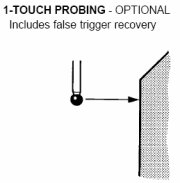 On
machines fitted with high speed probe inputs (sample
time less than 1 ms), a 1-touch probing
cycle is the quickest way to get an accurate reading.
On
machines fitted with high speed probe inputs (sample
time less than 1 ms), a 1-touch probing
cycle is the quickest way to get an accurate reading.
These simple cycles involve driving the probe stylus onto the surface in one rapid motion. The high speed input ensures a reliable indication of the surface position.
Renishaw 1 touch cycles include false trigger recovery.
2-touch cycles
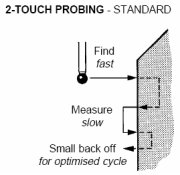 On
machines fitted with standard probe inputs (sample time
more than 1 ms), a 2-touch probing
cycle is the quickest way to get an accurate reading.
On
machines fitted with standard probe inputs (sample time
more than 1 ms), a 2-touch probing
cycle is the quickest way to get an accurate reading.
These cycles involve driving the probe stylus to find the surface in one rapid motion. This gives an approximate location for the surface. The cycle automatically backs the stylus off the surface by a small distance, and then drives it back onto the surface at a slower speed. This second measurement move is used to take the accurate reading.
![]()


